Friday I posted some links to the Cornell’s free data analysis software Eureqa. The video tutorials take a collection of data points from a swinging pendulum over time and then have the Eureqa software determine the function that best explains its wave using an evolutionary algorithm. I played with the software a bit this weekend, trying out various datasets, when I remembered the wealth of global temperature data on the World Wide Web.
With HadCRUT’s, NASA’s, UAH’s, and RSS’s data available online, I easily downloaded and imported the data into an excel spreadsheet, which made it easy to copy and paste into Eureqa. The HADCRUT data was the most thorough and extensive with over 21,000 points of data extending from 1850 to the present. It was also the most straightforward, which made it the most accessible for a non-statistician like myself. I had Eureqa search the average of the data points a through i against time for functions that best explain the relationship.
(a+b+c+d+e+f+g+h+i+j)/11 = f(t + (t2*.01))
Below are the fit functions Eureqa came up with from most fit to least. The function is at the top of each image with the result drawn over the data points below it:
Each one of these functions depicts a clear warming trend over the last 160 years of measurements that looks a whole lot like Hansen’s instrumental record of global average temperatures, inferred through software lacking any bias or preconceptions. An acceptable criticism of this data is that it only goes back to 1850; however, any climate skeptic who believes this warming trend is only a cyclical phenomenon is welcome to plug the deluge of ice core data into Eureqa and post their findings.
See Also:
New Scientist Magazine: Why there’s no sign of a climate conspiracy in hacked emails
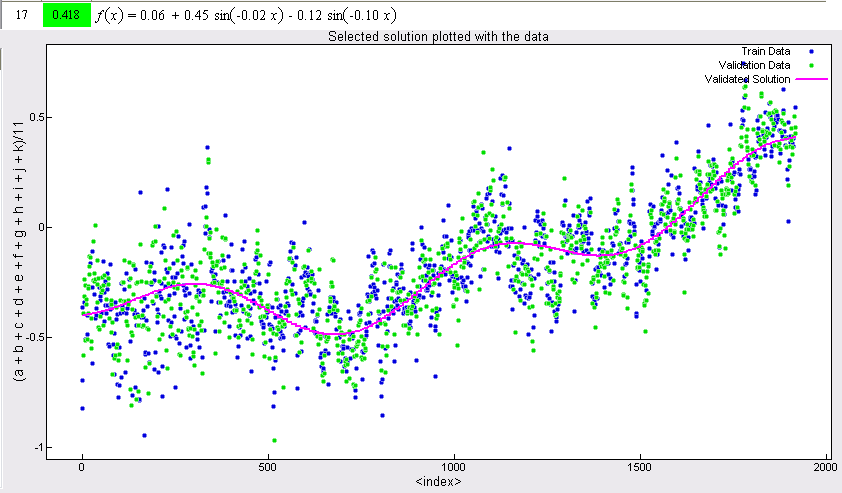
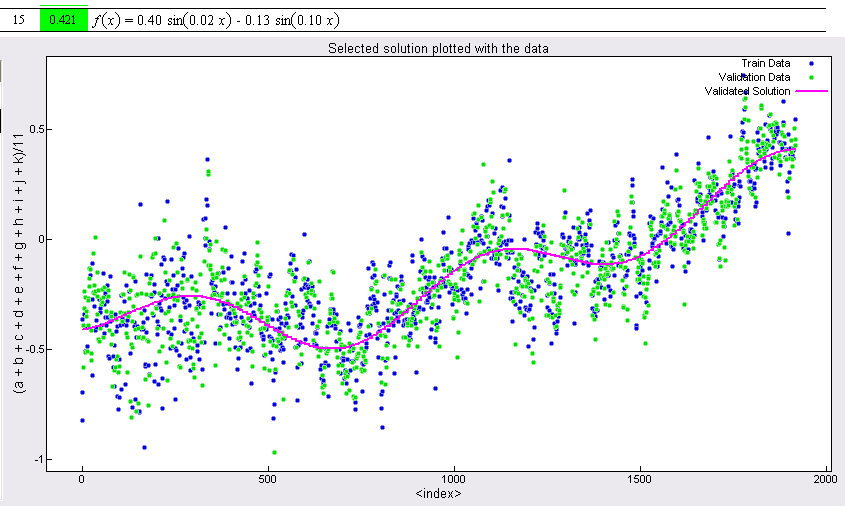
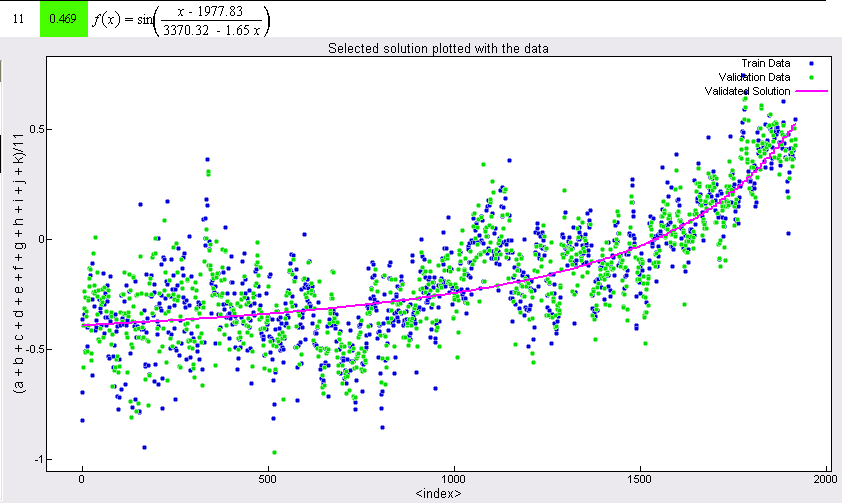
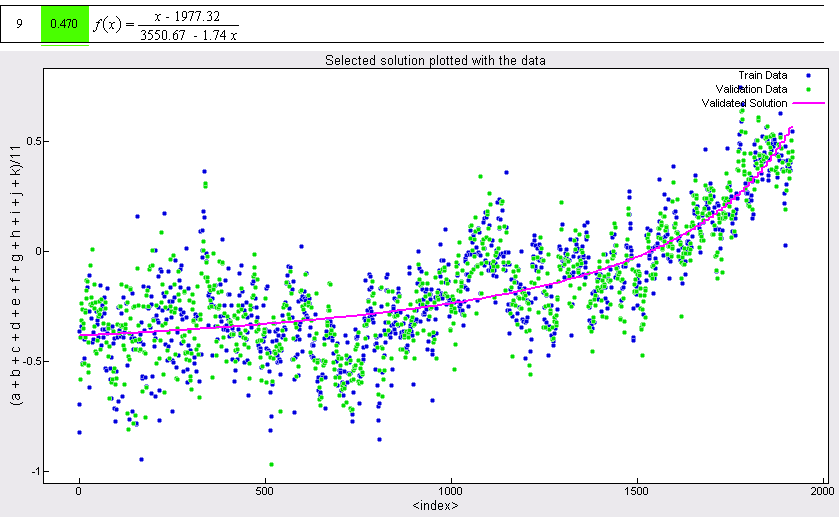
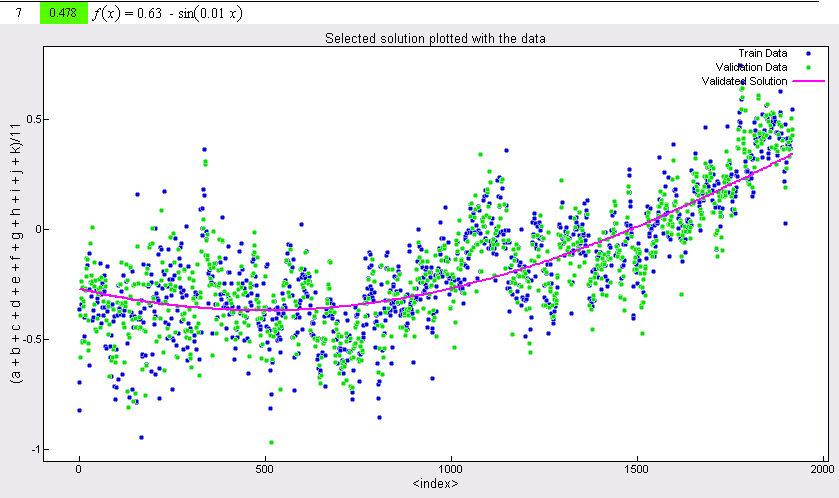
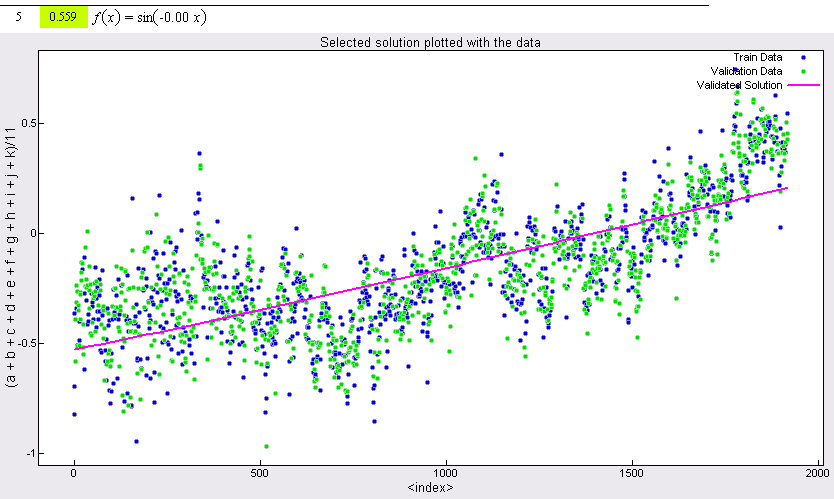
Comments
3 responses to “Plugging a Century of Climate Data into Eureqa”